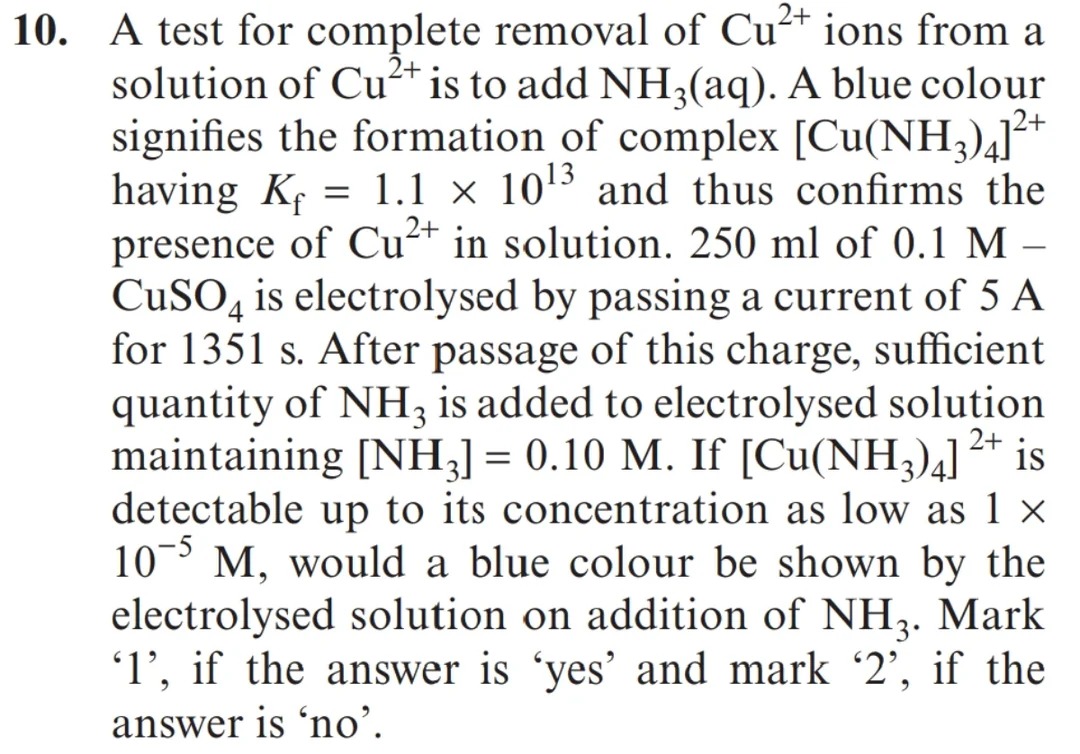Question
Question: A test for complete removal of Cu$^{2+}$ ions from a solution of Cu$^{2+}$ is to add NH$_3$(aq). A b...
A test for complete removal of Cu2+ ions from a solution of Cu2+ is to add NH3(aq). A blue colour signifies the formation of complex [Cu(NH3)4]2+ having Kf = 1.1 × 1013 and thus confirms the presence of Cu2+ in solution. 250 ml of 0.1 M – CuSO4 is electrolysed by passing a current of 5 A for 1351 s. After passage of this charge, sufficient quantity of NH3 is added to electrolysed solution maintaining [NH3] = 0.10 M. If [Cu(NH3)4]2+ is detectable up to its concentration as low as 1 × 10−5 M, would a blue colour be shown by the electrolysed solution on addition of NH3. Mark '1', if the answer is 'yes' and mark '2', if the answer is 'no'.

1
2
2
Solution
The charge passed during electrolysis is sufficient to reduce all initial Cu2+ ions to copper metal, leaving a residual [Cu2+] of 0 M. With no free Cu2+ ions, no complex [Cu(NH3)4]2+ can form. Since the concentration of the complex is 0 M, it falls below the detection limit of 1×10−5 M, and thus no blue colour is observed.
